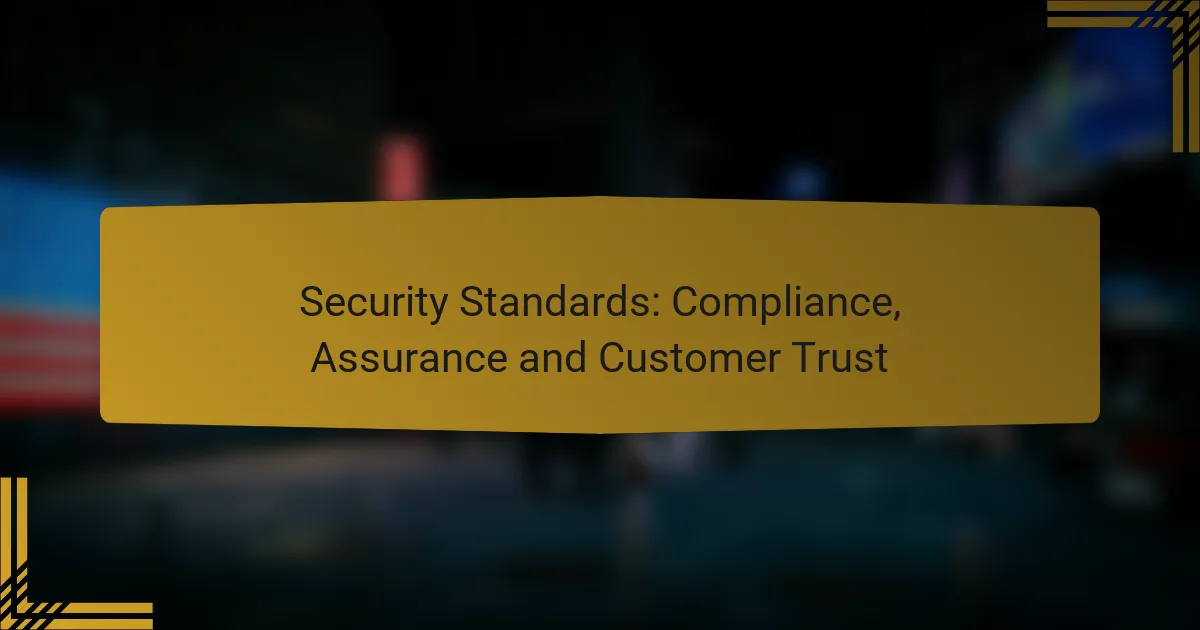In today’s digital landscape, adherence to security standards is crucial for Software as a Service (SaaS) providers in Canada. Standards such as ISO/IEC 27001 and PCI DSS not only ensure compliance with regulations but also enhance customer trust by demonstrating a commitment to data protection. By implementing robust security practices, organizations can safeguard sensitive information and foster confidence among their users.
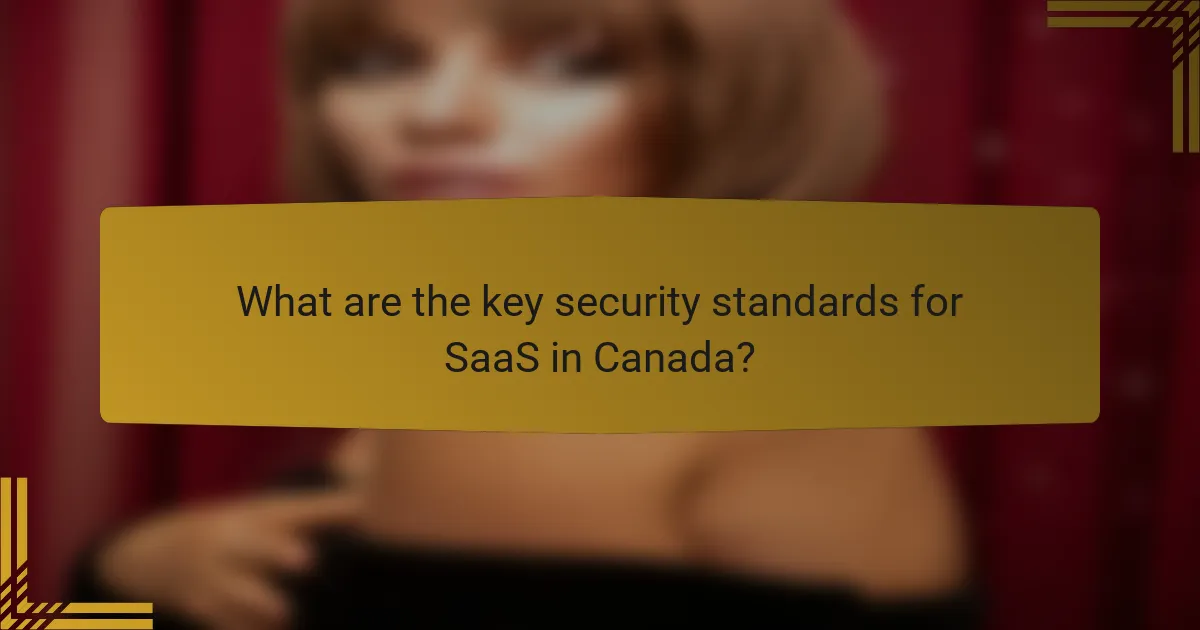
What are the key security standards for SaaS in Canada?
Key security standards for Software as a Service (SaaS) in Canada include ISO/IEC 27001, PCI DSS, GDPR compliance, CSA STAR, and the NIST Cybersecurity Framework. These standards help ensure data protection, compliance with regulations, and build customer trust through robust security practices.
ISO/IEC 27001
ISO/IEC 27001 is an international standard for information security management systems (ISMS). It provides a systematic approach to managing sensitive company information, ensuring its confidentiality, integrity, and availability.
To achieve ISO/IEC 27001 certification, organizations must conduct a risk assessment, implement necessary controls, and continuously monitor and improve their ISMS. This certification can enhance customer trust and demonstrate a commitment to security.
PCI DSS
The Payment Card Industry Data Security Standard (PCI DSS) is essential for any SaaS provider that handles credit card transactions. It outlines security measures to protect cardholder data and prevent fraud.
Compliance with PCI DSS involves implementing strong access control measures, maintaining a secure network, and regularly monitoring and testing networks. Non-compliance can result in hefty fines and loss of customer trust.
GDPR compliance
The General Data Protection Regulation (GDPR) applies to any SaaS provider that processes personal data of EU citizens, regardless of where the provider is located. It mandates strict data protection and privacy measures.
Key requirements include obtaining explicit consent for data processing, ensuring data portability, and implementing the right to be forgotten. Non-compliance can lead to significant fines, making adherence crucial for SaaS businesses targeting the European market.
CSA STAR
The Cloud Security Alliance (CSA) Security, Trust & Assurance Registry (STAR) is a program that provides a framework for assessing the security of cloud services. It offers three levels of assurance, from self-assessment to third-party audits.
Participating in CSA STAR can help SaaS providers demonstrate their commitment to security and transparency. It also aids customers in making informed decisions when selecting cloud services.
NIST Cybersecurity Framework
The NIST Cybersecurity Framework provides a policy framework of computer security guidance for how private sector organizations can assess and improve their ability to prevent, detect, and respond to cyber attacks. It is widely adopted in the U.S. and serves as a model for organizations in Canada as well.
Organizations can implement the framework by identifying their cybersecurity risks, protecting their assets, detecting incidents, responding effectively, and recovering from any breaches. This proactive approach can significantly enhance overall security posture.
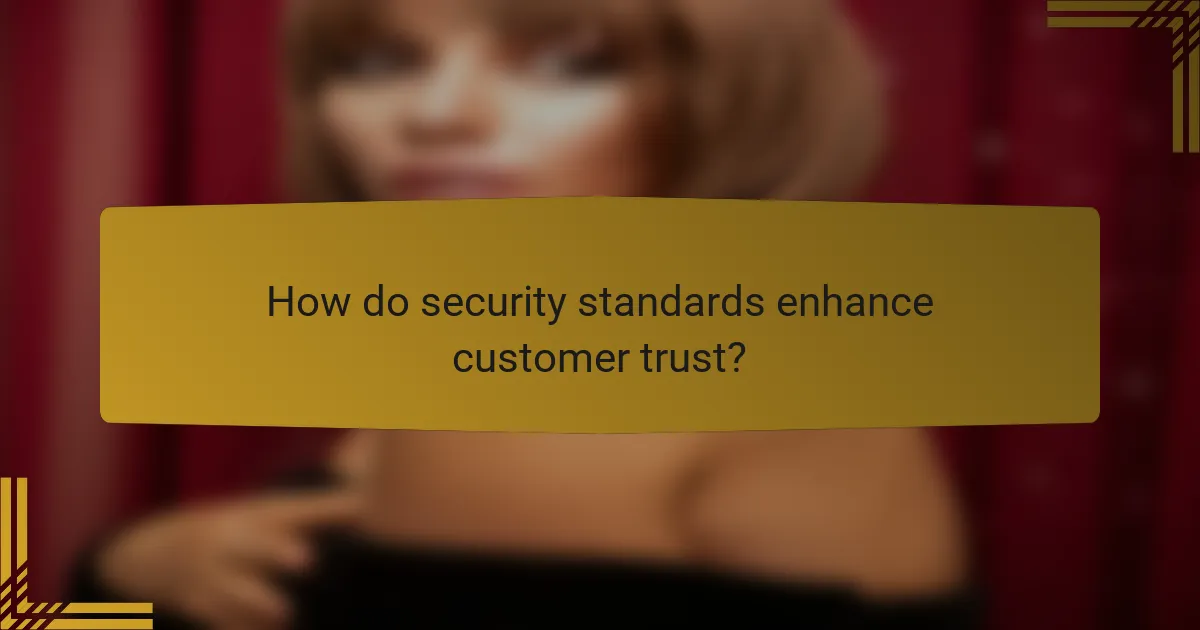
How do security standards enhance customer trust?
Security standards enhance customer trust by providing a framework for organizations to protect sensitive information and demonstrate their commitment to safeguarding data. When customers see that a company adheres to recognized security standards, they feel more confident that their personal and financial information is secure.
Increased transparency
Increased transparency is a key benefit of adhering to security standards. Organizations that openly share their compliance with standards like ISO 27001 or PCI DSS allow customers to understand their security practices better. This openness fosters trust, as customers can see the measures taken to protect their data.
To enhance transparency, companies can publish security audits, certifications, and compliance reports on their websites. This not only informs customers but also sets a benchmark for accountability.
Data protection assurance
Data protection assurance is critical for building customer trust. Security standards outline specific protocols for handling and storing sensitive information, ensuring that data is protected against breaches and unauthorized access. For instance, implementing encryption and access controls as part of these standards can significantly reduce the risk of data exposure.
Organizations should regularly review and update their data protection measures to align with evolving standards. This proactive approach reassures customers that their information is managed with the highest level of security.
Regulatory compliance
Regulatory compliance is essential for maintaining customer trust, as many industries are governed by strict data protection laws. Compliance with standards such as GDPR in Europe or HIPAA in the United States not only helps avoid legal penalties but also demonstrates a commitment to ethical data management.
Businesses should stay informed about relevant regulations and ensure their security practices meet these requirements. Regular training for employees on compliance matters can further strengthen customer confidence in the organization’s commitment to security.
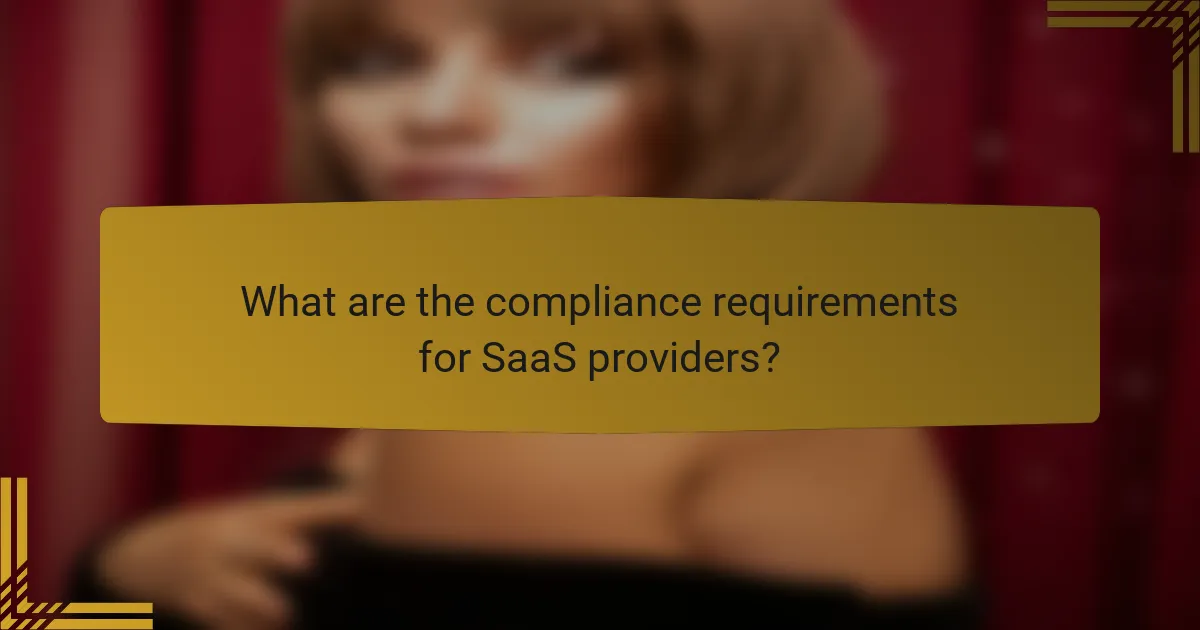
What are the compliance requirements for SaaS providers?
SaaS providers must adhere to various compliance requirements to ensure data security and build customer trust. Key areas include regular audits, data encryption, and incident response plans, which collectively help maintain regulatory standards and protect sensitive information.
Regular audits
Regular audits are essential for SaaS providers to assess compliance with security standards and regulations. These audits can be internal or external and typically occur annually or biannually, depending on the organization’s size and the sensitivity of the data handled.
During an audit, various aspects such as access controls, data handling procedures, and security policies are evaluated. Providers should prepare by maintaining thorough documentation and ensuring that all staff are trained on compliance protocols.
Data encryption
Data encryption is a critical requirement for SaaS providers to protect sensitive information both in transit and at rest. This process involves converting data into a secure format that can only be read by authorized users, significantly reducing the risk of data breaches.
Providers should implement strong encryption standards, such as AES-256, and regularly update their encryption protocols to counter evolving threats. Additionally, it is important to ensure that encryption keys are managed securely to prevent unauthorized access.
Incident response plans
An incident response plan outlines the steps a SaaS provider must take in the event of a security breach or data loss. This plan is crucial for minimizing damage and restoring services quickly, thereby maintaining customer trust.
Effective incident response plans should include clear roles and responsibilities, communication strategies, and procedures for identifying and mitigating threats. Regular testing and updates to the plan are necessary to ensure its effectiveness in real-world scenarios.
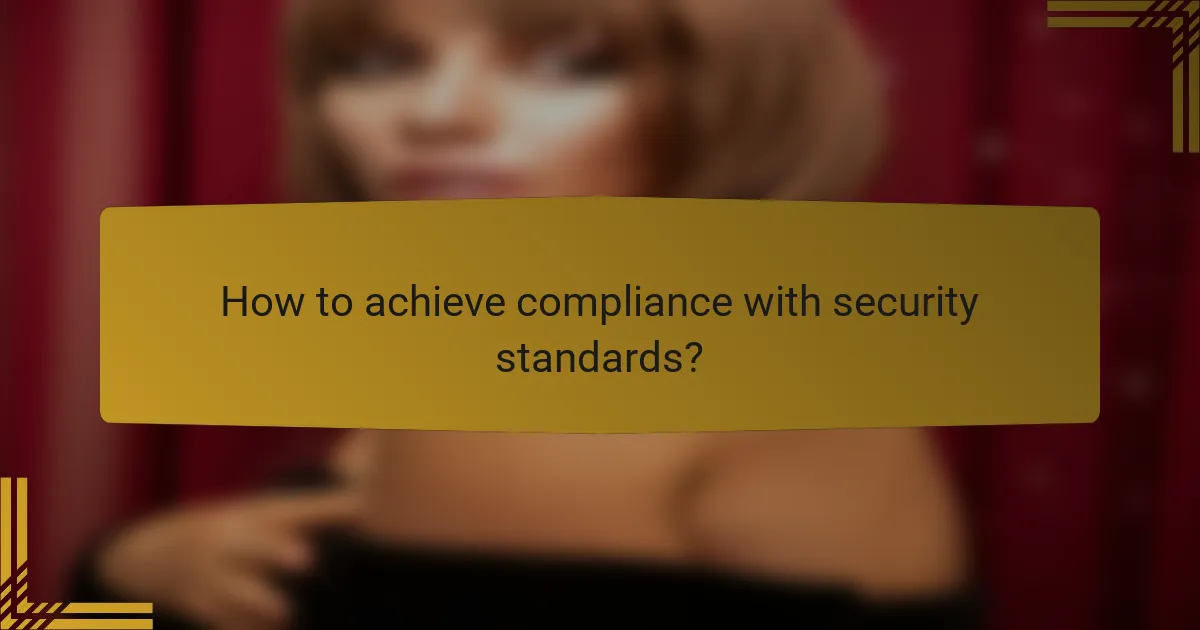
How to achieve compliance with security standards?
Achieving compliance with security standards involves implementing structured policies, conducting thorough risk assessments, and providing employee training. These steps ensure that organizations meet required regulations and build trust with customers.
Implement security policies
Establishing clear security policies is crucial for compliance. These policies should outline the organization’s approach to data protection, access control, and incident response. Regularly reviewing and updating these policies helps adapt to evolving threats and regulatory changes.
Consider including specific guidelines on data encryption, user authentication, and network security. For example, a policy may require two-factor authentication for all remote access to sensitive systems.
Conduct risk assessments
Regular risk assessments identify vulnerabilities and help prioritize security measures. These assessments should evaluate both internal and external threats, considering factors like data sensitivity and potential impact on operations.
Utilize a risk matrix to categorize risks by likelihood and impact, which can guide resource allocation. For instance, high-impact risks may require immediate remediation, while lower risks can be monitored over time.
Employee training programs
Training employees on security best practices is essential for maintaining compliance. Regular training sessions should cover topics such as phishing awareness, data handling procedures, and incident reporting protocols.
Implementing a training schedule that includes refresher courses can help reinforce knowledge. Consider using interactive methods, such as simulations or quizzes, to engage employees and enhance retention of critical information.
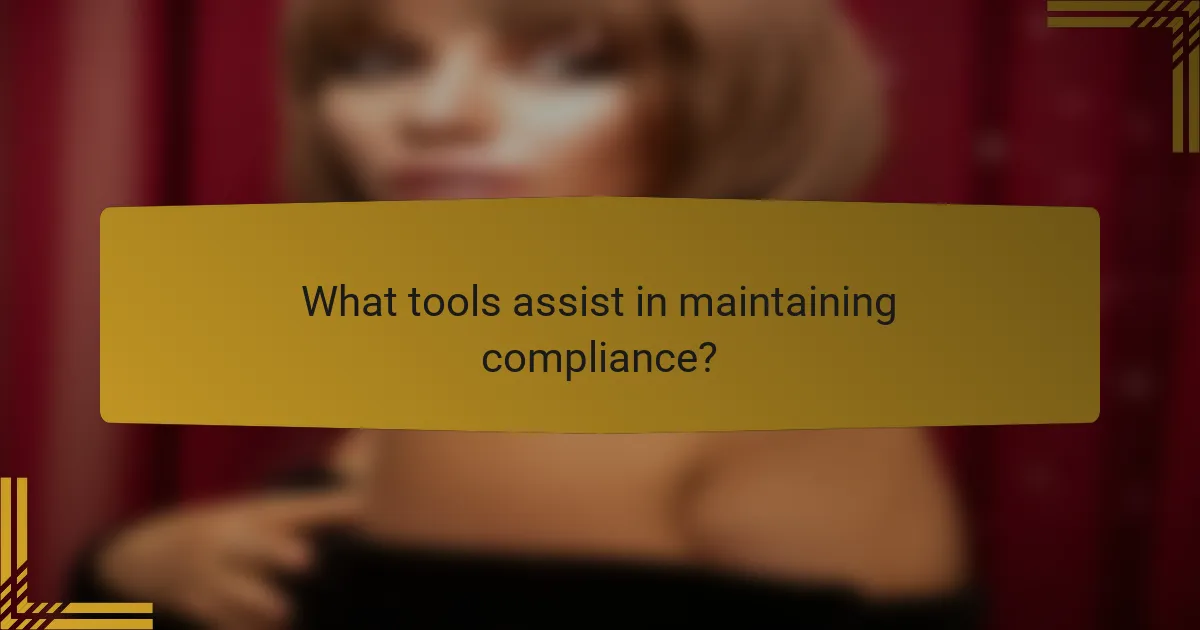
What tools assist in maintaining compliance?
Several tools play a crucial role in maintaining compliance with security standards. These tools help organizations monitor, manage, and assess their security posture, ensuring they meet regulatory requirements and build customer trust.
Security Information and Event Management (SIEM)
SIEM tools aggregate and analyze security data from across an organization’s IT infrastructure. They provide real-time monitoring and alerts for suspicious activities, helping organizations respond quickly to potential threats.
When selecting a SIEM solution, consider factors like scalability, integration capabilities, and ease of use. Popular options include Splunk, LogRhythm, and IBM QRadar, each offering unique features to suit different organizational needs.
Compliance management software
Compliance management software streamlines the process of tracking and adhering to various regulations and standards. These tools often include features for policy management, audit management, and reporting, which simplify compliance workflows.
Look for software that supports specific regulations relevant to your industry, such as GDPR or HIPAA. Examples include LogicGate and ComplyAdvantage, which help automate compliance tasks and reduce the risk of non-compliance penalties.
Vulnerability assessment tools
Vulnerability assessment tools identify security weaknesses in systems and applications, allowing organizations to prioritize remediation efforts. These tools scan for known vulnerabilities and provide actionable insights to enhance security posture.
When using vulnerability assessment tools, ensure they are regularly updated to recognize the latest threats. Tools like Nessus and Qualys are widely used for their comprehensive scanning capabilities and user-friendly interfaces.
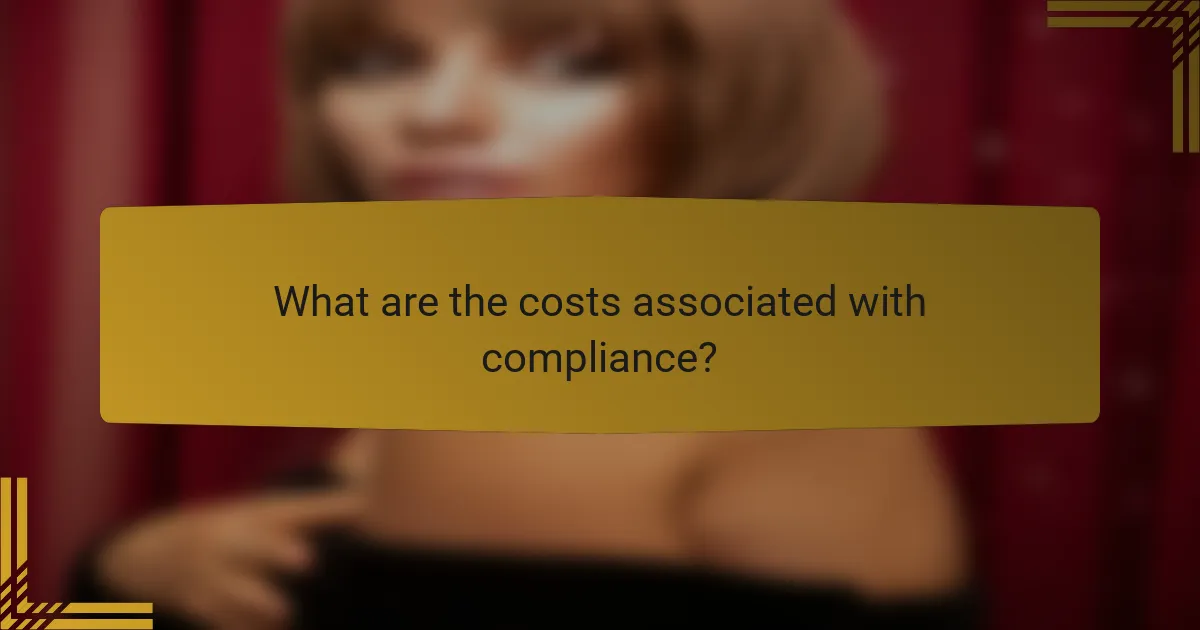
What are the costs associated with compliance?
The costs associated with compliance can vary widely based on the specific regulations and standards an organization must meet. These costs typically include initial setup expenses, ongoing operational costs, and potential penalties for non-compliance.
Initial setup costs
Initial setup costs for compliance often encompass expenses related to technology, training, and process development. Organizations may need to invest in software solutions, hardware upgrades, or security tools to meet compliance requirements.
Training staff is another significant expense, as employees must understand new protocols and systems. Depending on the size of the organization, these costs can range from a few thousand to tens of thousands of dollars.
Additionally, hiring external consultants or auditors to assess compliance readiness can add to initial expenses. It’s essential to budget adequately for these costs to ensure a smooth transition to compliant operations.
